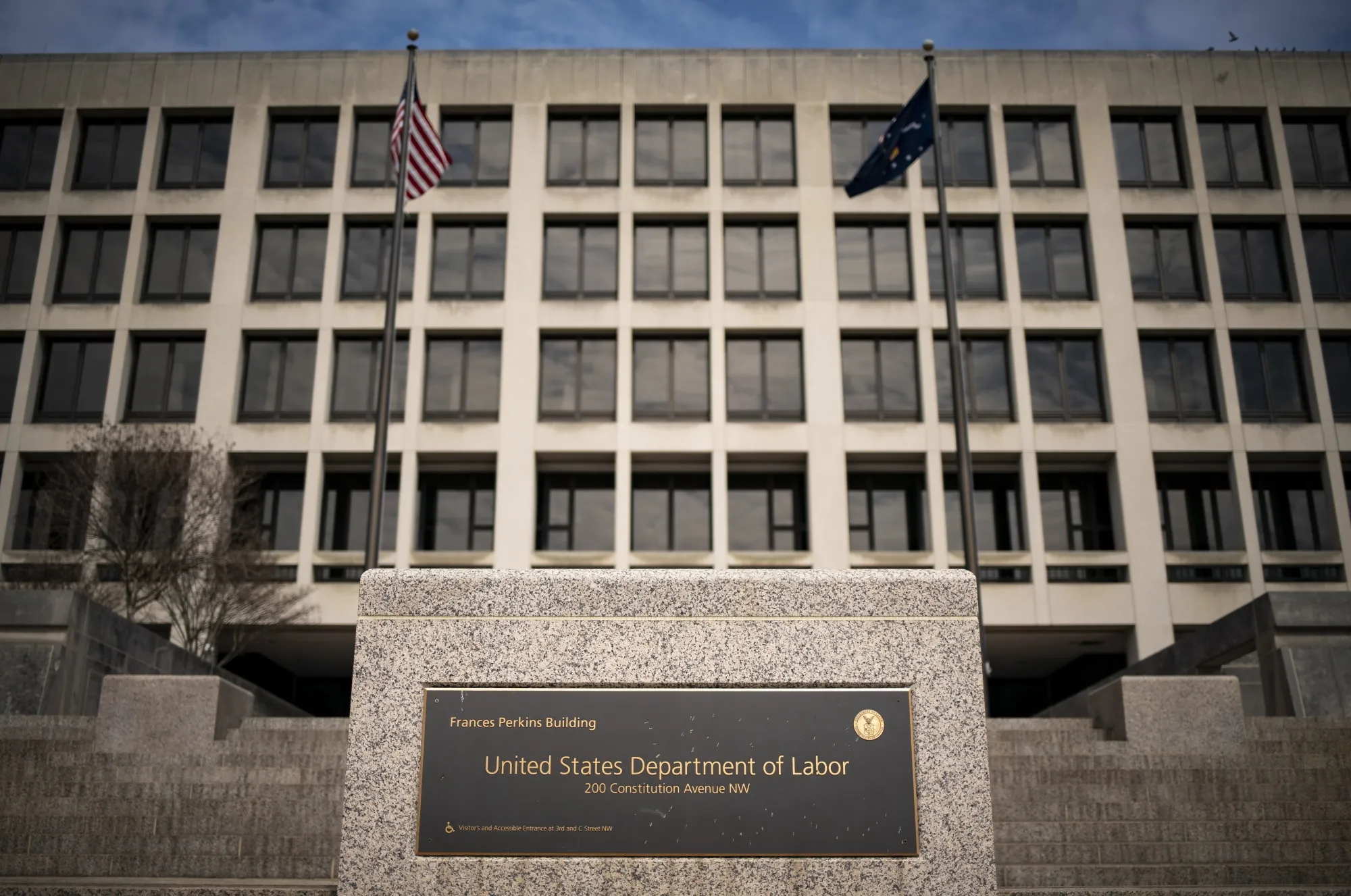:max_bytes(150000):strip_icc()/BureauofLaborStatistics-0a868acbc1dd4b67a4f0dcfcb2bf040b.jpg)
In a recent turn of events that has drawn considerable public attention, President Donald J. Trump has intensified his criticism of the Bureau of Labor Statistics, an independent federal agency tasked with gathering vital economic data. His pronouncements, made primarily on social media platforms, followed the dismissal of the BLS commissioner and centered on claims that the agency’s jobs reports were intentionally “rigged” for political purposes.
This high-profile dispute has cast an unprecedented spotlight on the methods and integrity of the BLS, an institution whose data has long served as a crucial barometer for the nation’s economic health. The president’s accusations challenge the very foundation of trust in government statistical reporting, prompting a deeper examination of how these critical economic indicators are actually compiled and what makes their revisions a routine, rather than suspicious, occurrence.
The genesis of the president’s recent assertions can be traced to a Friday Employment Situation Summary report from the BLS, which indicated that U.S. employers had added 73,000 new jobs in July, a figure significantly below pre-report projections. Accompanying this report were adjustments to employment data from the two preceding months, May and June, which further fueled the president’s discontent.

Specifically, May’s jobs total was revised from an initial report of 144,000 to 19,000 jobs, representing a substantial revision of 125,000 positions. For June, the BLS announced that the U.S. economy had added 14,000 jobs, a stark decrease from a preliminary estimate of 147,000, marking a change of 133,000 positions. These revisions, combined, amounted to an adjustment of approximately 250,000 jobs.
Following the report’s release, President Trump took to Truth Social, stating, “In my opinion, today’s Jobs Numbers were RIGGED in order to make the Republicans, and ME, look bad.” Days later, he escalated his claims, announcing the firing of Erika McEntarfer, who had served as the BLS commissioner since January 2024.
On Sunday, President Trump continued to lambast the agency, claiming without evidence that Commissioner McEntarfer had manipulated data prior to the 2024 election. He posted on Truth Social, “Head of the Bureau of Labor Statistics did the same thing just before the Presidential Election, when she lifted the numbers for jobs to an all time high.”

He further asserted, “I then won the Election, anyway, and she readjusted the numbers downward, calling it a mistake, of almost one million jobs. A SCAM! She did it again, with another massive “correction,” and got FIRED! She had the biggest miscalculations in over 50 years.” These statements underscore the gravity of the president’s skepticism regarding the integrity of federal economic data.
The Bureau of Labor Statistics, an agency established over 140 years ago, operates as an independent entity under the U.S. Labor Department. Its core mission involves collecting a diverse array of economic data, including employment counts, inflation rates, worker wages, and other critical labor market information. The BLS commissioner, a position requiring confirmation by the U.S. Senate, serves a four-year term, often overlapping with multiple presidential administrations.

To fulfill its mandate, the BLS employs two primary surveys to compile its comprehensive monthly reports on the U.S. jobs sector. The first, known as the Household Survey, is conducted by the Census Bureau and directly gathers information from approximately 60,000 households across the nation. This survey focuses on employment status and labor force participation, forming a representative sample of the broader U.S. labor force.
The second crucial tool is the Establishment Survey, which is conducted directly by the BLS itself. This survey reaches out to around 120,000 non-agricultural businesses, collecting detailed data on payroll numbers, employee earnings, and hours worked. The sample size for this survey is notably robust, representing approximately one-third of all non-farm jobs in the country.

Once the raw data is collected through these rigorous survey methods, a meticulous process of verification and analysis begins. Economists and statisticians within the BLS diligently check the data for any potential mistakes, combine the various data points to identify emerging trends, and then proceed with a thorough analysis of the results. This multi-layered approach is designed to ensure the highest possible degree of accuracy and reliability in the reported figures.
The data produced by the BLS is indispensable, serving as the bedrock for a wide range of economic decisions across both government agencies and private businesses. It is utilized to understand economic behavior, inform investment strategies, and guide crucial planning related to business expansion or contraction. Its comprehensive scope and established credibility make it a benchmark for economic understanding.
Despite the sophisticated methodologies employed, revisions to job reports are a common and expected aspect of the data collection process. Katharine Abraham, an economics professor at the University of Maryland who served as BLS commissioner from 1993 to 2001, elucidates this point, stating, “As more information comes in, the numbers get revised. That’s just a part of the process.”

She further explains the inherent trade-off in the system: “There’s a trade off between getting numbers out quickly and having them be as accurate as possible.” Early versions of job reports often rely on responses from larger businesses that can respond quickly to surveys. Data from smaller businesses, which are frequently more susceptible to economic shifts, typically filters in at a later stage.
This phenomenon of revision is not new or isolated. Historical records demonstrate that sizable revisions have been a recurring feature of BLS reporting. For instance, CNN notes that much larger revisions occurred in 2020 and 2021, when job numbers experienced significant fluctuations due to the unprecedented impact of the pandemic.
During those years, revisions in four months surpassed those seen in the recent report, including the largest-ever 679,000-job revision in March 2020, which was largely attributed to particularly poor survey responses amidst a nationwide lockdown. Outside of the pandemic era, revisions of considerable scale have also occurred, such as a 143,000-job reduction in January 2009.
The combined 258,000-job reduction for May and June of this year, while significant, remains within the historical context of such adjustments. BBC Verify points out that this figure represents the biggest change since records began, excluding the months immediately following the Covid pandemic. The average monthly change to job figures, up or down, has been 57,000 since 1979, according to the BLS.

Moreover, revisions tend to increase in magnitude during periods of economic turbulence. Instances of the BLS revising down monthly job numbers by over 100,000 have occurred eight times since 2000, with many of these instances coinciding with the 2008 financial crisis. For example, a 143,000 reduction was made to the January 2009 figure during the Obama administration.
It is also noteworthy that job gains for the entire year in 2009 were eventually estimated to be 902,000 lower than the initial figures, marking the largest full-year revision on record. Similarly, job creation under President Joe Biden in 2024 was revised down by 598,000, an update that also generated political debate, although it was a smaller change than the over 800,000 initially estimated in 2023.
In the current context, many analysts had anticipated revisions to the June figures, which had shown an unusual increase in school employment during a month when most schools typically close for the summer. Furthermore, later responses often disproportionately represent smaller firms, which are generally more sensitive to economic headwinds, such as the impact of new tariffs, contributing to the downward adjustments.




